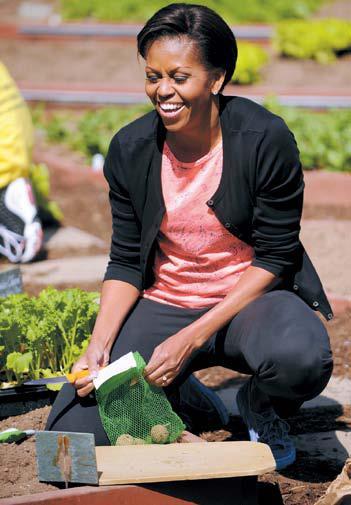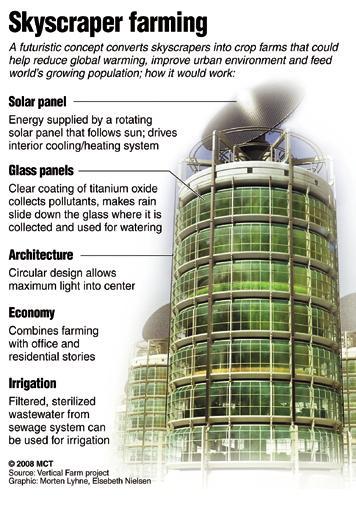 |
U.S. first lady Michelle Obama participates with schoolchildren in the fourth annual White House Kitchen Garden spring lantingin Washington, D.C., March 26. She has been growing vegetables on the White House lawn for her family and guests since 2009. (MCT) |
The urban agriculture movement has long thrived in big cities in the West to meet growing desires for health, repose and a sense of community.
Around the world, over 800 million urban dwellers grow vegetables, fruits or flowers in their backyards, on rooftops or even in a few pots on a balcony, according to the Rural Development Administration.
“Urban farming is a 21st-century trend among world cities, as people have begun to seek out new values in city life, such as environment and community building,” wrote Song Jung-sub, a researcher at the RDA, in a report on urban farming.
Those farms often take different names and forms depending on cities.
In New York City, rooftop gardens are the big trend, with plants growing on top of over 600 buildings.
Nearly 9,000 “city farms” thrive on vacant lots in Montreal, Canada.
The United Kingdom has a much longer tradition of “allotment gardens.” There are now about 300,000 such gardens, spread across the country.

In Germany, the Klein Garten movement, translated as “little garden,” planted the seeds of urban farming. There are now about 1 million such gardens across the country.
Some early movers in those countries now envision soaring vertical farms that could eventually produce most of what people need from within the city.
Urban farming is also creating new business opportunities for those in the conventional agricultural industry.
In the U.S., farming tools with sleek designs have been created to reinvent farming as a new leisure activity. The burgeoning rank of urban growers also led to a soaring demand for small packages of seeds.
By Lee Sun-young (
milaya@heraldcorp.com)









